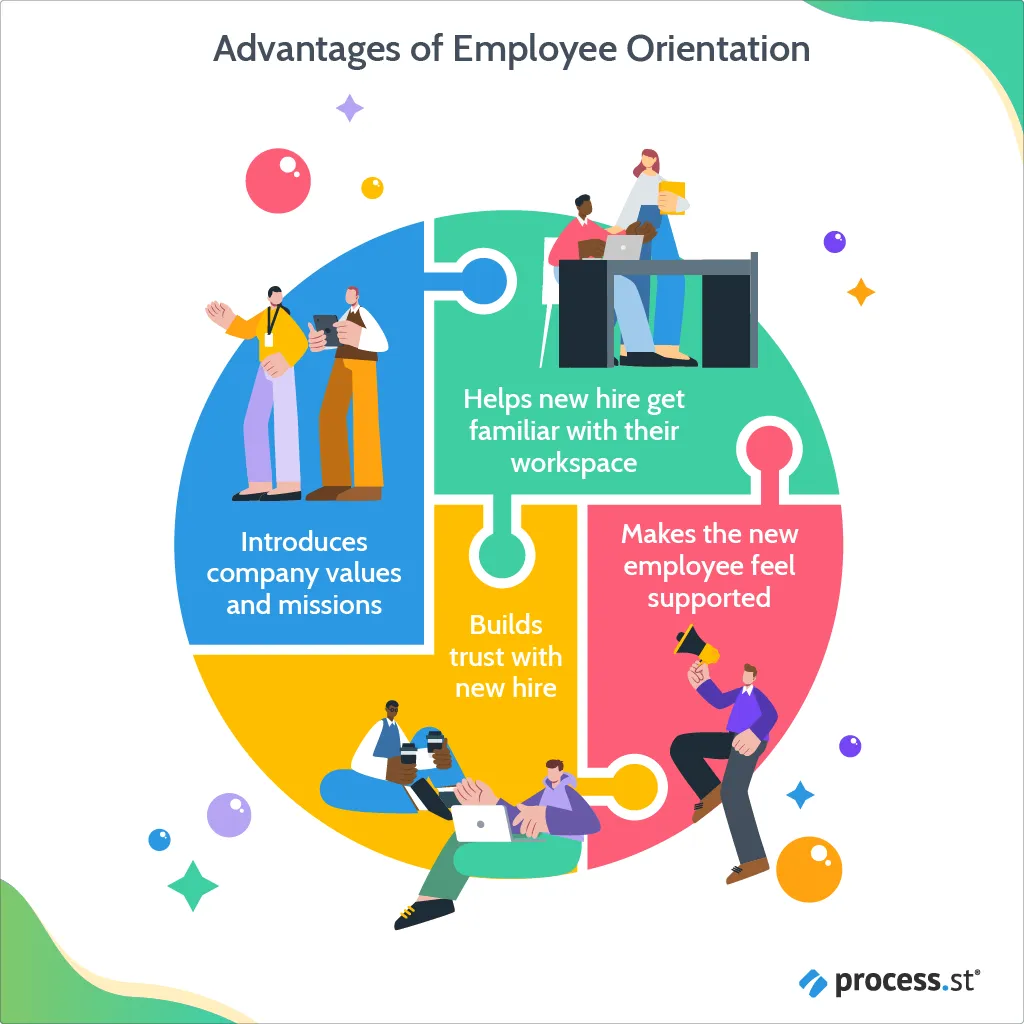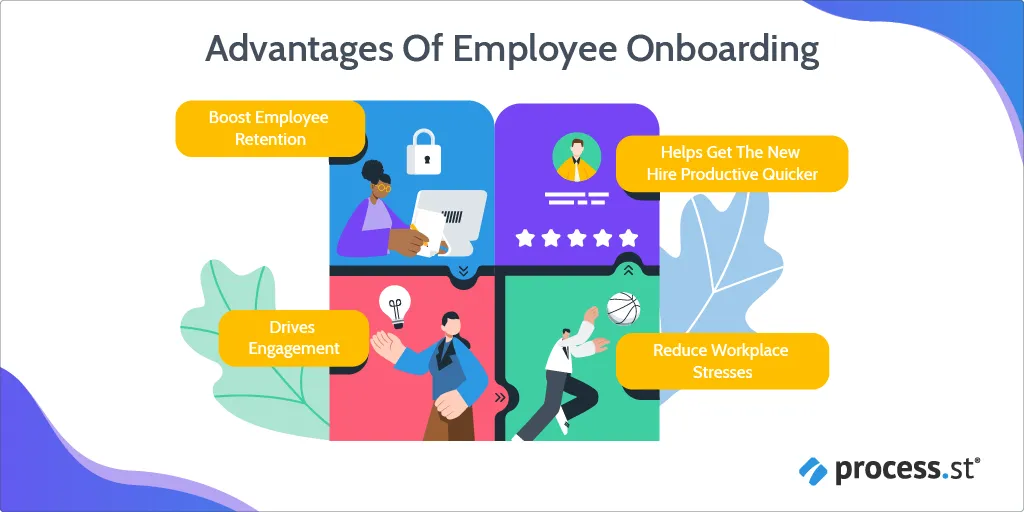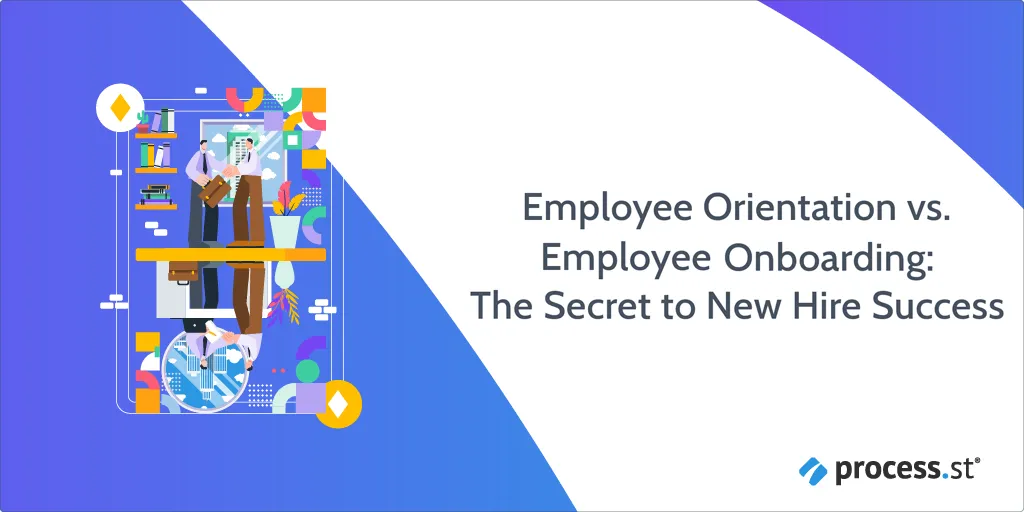Employee Orientation vs. Employee Onboarding: The Secret to New Hire Success
Blog: The Process Street Blog
 Research has shown that starting a new job is more stressful than moving house or foreclosing on a loan. HR managers are responsible for making the transition into a new company less stressful than it already is. That’s why employee onboarding is so important.
Research has shown that starting a new job is more stressful than moving house or foreclosing on a loan. HR managers are responsible for making the transition into a new company less stressful than it already is. That’s why employee onboarding is so important.
Typically, onboarding happens during their first week. The phase before and during an employee’s actual first day is called orientation. There’s a ton of misconceptions around orientation being part of onboarding: which is the most important, what tasks are associated with each, and so on.
That’s what we’re taking a look at in this Process Street article.
- Defining employee orientation
- All about employee onboarding
- Employee orientation vs. onboarding: Who’s the overall winner?
- How can Process Street help you blend the two together?
- Offering employee orientation and onboarding for new hire success
Let the fight begin: Employee orientation vs. employee onboarding! 
Defining employee orientation
The employee orientation phase is when new hires are introduced to their responsibilities, colleagues, and workplace. Think of it as their first impression of their new role.
An effective employee orientation process:
- Makes new hires aware of company expectations and policies;
- Makes new hires feel welcome;
- Answers any concerns or questions they might have;
- Introduces them to their new workspace and role.
Advantages of employee orientation
 A well-structured employee orientation process helps you reap many benefits. The most important one being that your employee feels supported and welcomed. After all, your employee orientation is specifically for your employee.
A well-structured employee orientation process helps you reap many benefits. The most important one being that your employee feels supported and welcomed. After all, your employee orientation is specifically for your employee.
If your new recruit is happy, they have loyalty to your company. This boosts retention and engagement while reducing new hire churn. In fact, a comprehensive orientation process helps your new employee sink their teeth into job-related work (as opposed to onboarding-related work) a whole lot quicker – increased productivity!
Tasks you need to do during employee orientation
When constructing your employee orientation process, you should include tasks that:
- Help introduce your new hire to the company vision, values, and mission;
- Complete all necessary employee paperwork;
- Give them a tour of their new workplace;
- Help the new hire understand what’s expected of them during the orientation phase;
- Get feedback on their hiring experience;
- Help introduce them to their colleagues and start building a rapport.
All about employee onboarding
Employee onboarding is a thorough process that introduces a new employee to the role and integrates them into the company culture. During this time, they typically attend meetings, perform starter projects, shadow their assigned mentors, and take part in training programs. The process can last up to 3 months or even longer.
Advantages of employee onboarding
 It’s safe to say that without employee onboarding, your new hire is doomed from the start. Now, I wouldn’t say there isn’t any chance of employee success if you don’t onboard them, but I’m going to say there isn’t any chance of employee success.
It’s safe to say that without employee onboarding, your new hire is doomed from the start. Now, I wouldn’t say there isn’t any chance of employee success if you don’t onboard them, but I’m going to say there isn’t any chance of employee success.
Before working at Process Street, I wrote for a digital marketing agency. Long story short: it was more disorganized than that infamous junk drawer – don’t pretend you don’t know what I’m talking about.
I was practically thrown in the deep end. No support. No mentoring. No employee handbook. Just “this is an overview of the client’s business. This is what they want you to write about. Only write in 1st person. Don’t use the word ‘will’.” – still to this day I don’t know why. Finally, make sure it’s practically perfect because the editor doesn’t want to spend more than 2 minutes reading through it.
As you can imagine, my excitement to write for this company was non-existent. That was the complete opposite experience I had with Process Street. I was assigned an employee onboarding workflow. It detailed everything I would be doing for the next 3 months in the role, meetings I would be having, projects I had planned, and reading lists that would be helpful.
From this onboarding process, I understood what was expected of me and I got acclimatized to my new working environment quicker than I thought I would. It was less stressful and I was excited to get up in the morning and do the work.
This is mainly because I have a team of people who are welcoming and eager to help me if I need it. Having an employee onboarding process will likely be the same for your new recruits.
Tasks you need to do during employee onboarding
When you create your employee onboarding process, you want to include tasks that:
- Help your new employee integrate into your company culture and become part of the workforce;
- Introduce them to their typical working schedule;
- Have regular check-ins throughout their first 3 months until they’re comfortable with working independently;
- Create and present defined objectives and ongoing expectations to the new hire.
Employee orientation vs. onboarding: Who’s the overall winner?
In the battle of employee orientation and employee onboarding, there isn’t a specific winner.
Why? Well, both processes are vital for a company when you’re recruiting new employees and they also share the same overall objective: Getting your new hire comfortable in their new workplace.
So, if they are similar in nature and share the same objective, why can’t the two terms be used interchangeably? The most significant difference is the timing of each process.
The employee orientation process starts immediately after an employee accepts the company offer and helps prepare them for their first day. Orientation continues during their first day and lasts about a week. Some companies find it beneficial to continue orientation for a month, but that’s entirely up to you and your new employee’s needs.
Onboarding includes orientation, but the complete process lasts up to 3 months. Of course, like the orientation process, you might want it to be longer or shorter depending on your specific needs. After your new employee has been introduced to their new workspace (orientation), the rest of the onboarding process is catered around getting them integrated into the company culture.
Orientation and onboarding compliment each other. You need orientation to get acclimatized and onboarding to get them working their day-to-day duties. When executed together, you can support your new employee in increasing organizational commitment, job satisfaction, productivity, and engagement while reducing workplace stress levels and churn.
Your orientation phase should be similar to the process of introducing a new fish into your fish tank. You know how when you buy a fish at a store, they put it in a little bag of water? Then when you bring it home, you can’t just dump the fish into the tank. You have to place the bag into the tank so the fish gets used to the environment and the water temperature balances and then you open the bag and let the fish swim out perfectly at ease.
Your new hire is like this fish. When you introduce an orientation program, you’re letting your new hire get used to their new environment and ‘water temperature.’ Your new hire is kept in its bag – metaphorically speaking, of course – until they can move into the fish tank and start working alongside their colleagues.
Of course, once they’re in the tank, you want to keep checking up on them to make sure they’re adapting well to this new environment. Onboarding your new ‘fish’ starts from the moment you pick it out in the pet store and ends once you’ve observed your fish swimming happily in this tank for a set period of time.
The orientation phase of making sure the new hire gets accustomed to the water temperature and eventually moves out of the bag and can swim freely is only one part of the onboarding process. The same can be said for your new hire.
How can Process Street help you blend the two together?
Executing both processes means transitioning from the orientation phase to the onboarding process with ease. Now, I understand that this isn’t as effortless as it seems. You’re preoccupied with many other tasks you need to complete.
Knowing when orientation is over and onboarding begins can get stressful. That’s where a workflow can be useful. All you need to do is follow the steps outlined in your onboarding process. It automatically takes you through what you need to do before your new employee’s first day, getting them familiar with their new workspace from when they arrive, and continues to the integration portion of the process.
Having this process detailed as a template is so valuable because it ensures you’re offering a consistent experience to all of your new employees. Yet, a simple template isn’t always the best route. A workflow software, like Process Street, can help you create an actionable and automated onboarding process that guides through the entire process.
From preparing your new employee for their first day, to evaluating their performance after their first three months – Process Street helps you ensure no step is forgotten in the onboarding journey. You can also make use of Pages to document and store your employee handbook, company values and mission, and your policies alongside your onboarding workflow.
By doing this, you’re a step closer to creating a centralized onboarding hub that’s easily accessible for your employees and improves transparency. Everyone has what they need, knows what they need to do, and how to do it. This offers efficiency during the onboarding process, which we all know is crucial to new hire success.
Here’s one orientation and onboarding workflow template that you can start using today.
Offering employee orientation and onboarding for new hire success
The battle of employee orientation vs. employee onboarding has no winner and no loser. Instead of being opponents, these two processes need one another for their success.
Employee orientation and onboarding should be seen as allies – maybe even friends. But now I’m sounding more like a flower-power hippy who’s holding hands with onboarding and orientation, singing hakuna matata. Anyway, you get the point.
With that being said, orientation forms part of the overall onboarding process. Not including it in your onboarding process hinders the overall experience you’re giving to your new hire.
To get that new employee success that you most definitely want, you need to make sure you’re offering both orientation and onboarding to your recruit. Being organized during this process is key. Orientation and onboarding workflow templates are how you can achieve this.
Process Street is where you start using an onboarding workflow to not only become more organized, but to streamline the process. Sign up for free now, add a pre-made workflow to your library (or create your own), and run it whenever you welcome a new employee to your company.
What do you think is more important? Employee orientation or employee onboarding? Let us know in the comments.
The post Blog first appeared on Process Street | Checklist, Workflow and SOP Software.
